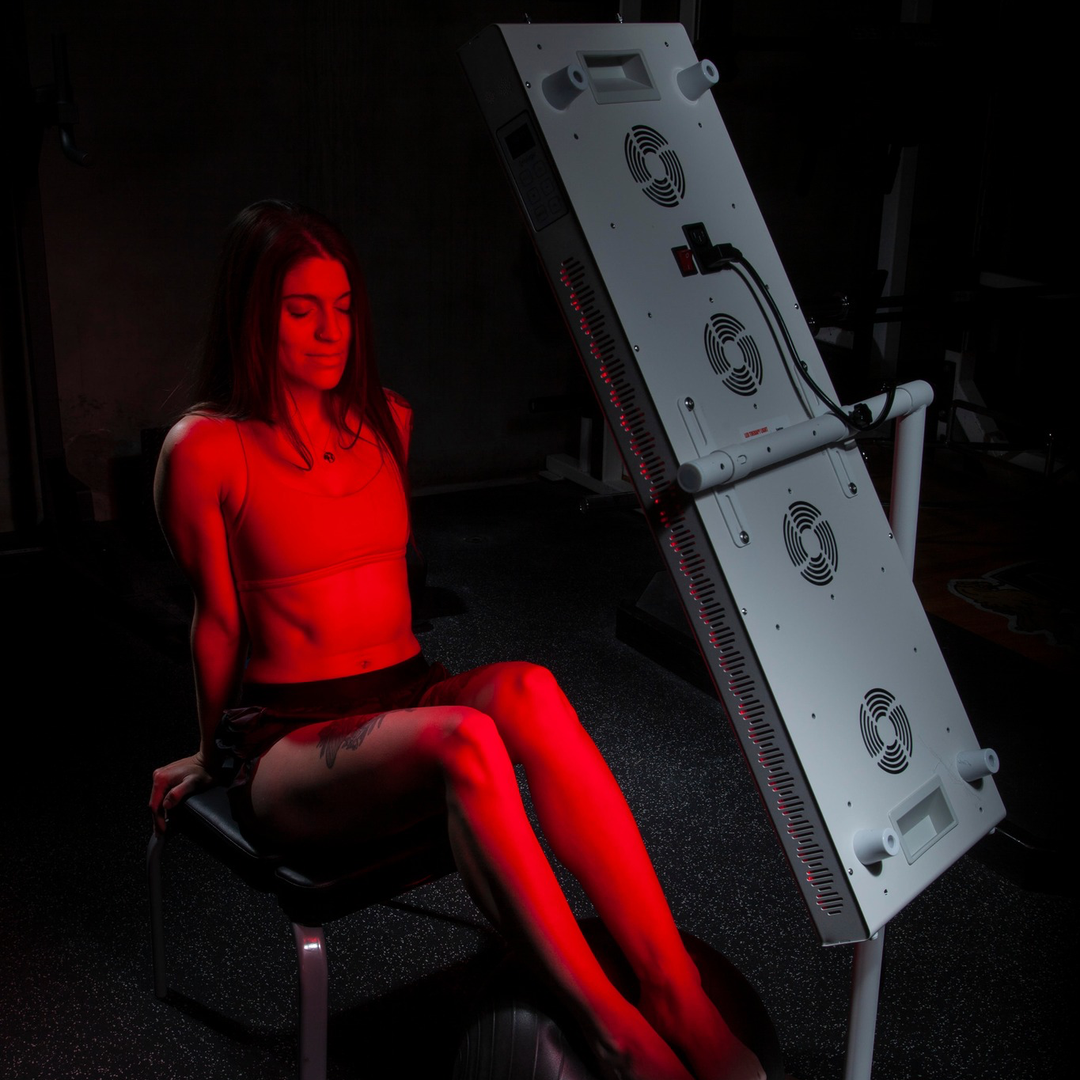![]() Free Shipping
Free Shipping ![]() Buy Now, Pay Later
Buy Now, Pay Later ![]() Eligible
Eligible
Red Light Therapy for Hypothyroidism: A Natural Approach to Thyroid Health

Introduction
Hypothyroidism, an underactive thyroid condition, affects millions of people worldwide. Common symptoms include fatigue, weight gain, depression, cold intolerance, and hair loss. While conventional treatments like synthetic thyroid hormones (e.g., levothyroxine) are effective for many, some individuals seek complementary therapies to enhance their thyroid function.
One emerging natural treatment is red light therapy (RLT), also known as low-level laser therapy (LLLT) or photobiomodulation (PBM). Research suggests that red and near-infrared light can stimulate thyroid function, reduce inflammation, and improve cellular energy production.
In this comprehensive guide, we’ll explore:
- The science behind red light therapy
- How it may benefit hypothyroidism
- Clinical evidence supporting its use
- Best practices for using RLT for thyroid health
- Potential risks and considerations
Understanding Hypothyroidism
What is Hypothyroidism?
Hypothyroidism occurs when the thyroid gland fails to produce sufficient thyroid hormones (T3 and T4), which regulate metabolism, energy, and overall cellular function. Common causes include:
- Hashimoto’s thyroiditis (an autoimmune disorder)
- Iodine deficiency
- Thyroid surgery or radiation therapy
- Certain medications
- Pituitary gland dysfunction
Conventional Treatments & Limitations
Standard treatment involves hormone replacement therapy (e.g., Synthroid, Levoxyl). While effective, some patients continue experiencing symptoms due to:
- Poor medication absorption
- Inadequate T4-to-T3 conversion
- Underlying autoimmune inflammation
This has led many to explore adjunctive therapies, including red light therapy.
What is Red Light Therapy?
Red light therapy uses specific wavelengths of light (630-850 nm) to penetrate the skin and stimulate cellular energy production (ATP) in mitochondria. Unlike UV light, RLT does not damage skin—instead, it promotes healing, reduces inflammation, and enhances circulation.
How Does Red Light Therapy Work?
- Boosts Mitochondrial Function – Light photons enhance ATP production, improving cell repair and energy.
- Reduces Inflammation – Modulates cytokines and oxidative stress, beneficial for autoimmune thyroiditis.
- Enhances Blood Flow – Improves circulation to the thyroid gland, supporting hormone production.
- Stimulates Thyroid Regeneration – Animal studies suggest RLT may help regenerate damaged thyroid tissue.
VELLGUS Elite V2
THE #1 RATED RED LIGHT DEVICE
VELLGUS pro V2
THE #1 RATED FULL BODY RED LIGHT DEVICE
Red Light Therapy for Hypothyroidism: The Evidence
1. Increases Thyroid Hormone Production
A 2013 study published in Lasers in Surgery and Medicine found that LLLT significantly increased T3 and T4 levels in rats with hypothyroidism. Human studies are limited but promising.
2. Reduces Thyroid Antibodies (Hashimoto’s)
A 2015 pilot study in Thyroid Research showed that RLT reduced thyroid peroxidase (TPO) antibodies in Hashimoto’s patients, suggesting immune-modulating effects.
3. Improves Metabolism & Energy Levels
Since thyroid hormones regulate metabolism, RLT’s ability to enhance mitochondrial function may help combat fatigue and weight gain.
4. Supports Medication Absorption & Conversion
Some hypothyroid patients struggle with poor T4-to-T3 conversion. RLT may support this process by improving liver and cellular function.
How to Use Red Light Therapy for Hypothyroidism
1. Choosing the Right Device
- Wavelength: 630-670 nm (red) and 810-850 nm (near-infrared) are most effective.
- Power Density: At least 50-100 mW/cm² for deep tissue penetration.
- FDA-Cleared Devices: Consider brands like Joovv, Mito Red Light, or PlatinumLED.
2. Treatment Protocol
- Thyroid Application: Shine the light directly on the neck (over the thyroid gland) for 5-10 minutes daily.
- Full-Body Therapy: For systemic benefits, use a full-body panel 3-5 times per week.
- Consistency: Results may take 4-12 weeks of regular use.
3. Combining with Other Therapies
- Nutrition: Support with selenium, zinc, and iodine (if deficient).
- Lifestyle: Manage stress, optimize sleep, and exercise.
- Medication: RLT is complementary, not a replacement for thyroid meds.
Potential Risks & Considerations
- Overstimulation: Rare, but excessive use may cause temporary hyperthyroid-like symptoms.
- Eye Safety: Avoid direct eye exposure—use protective goggles.
- Skin Sensitivity: Some may experience mild redness or irritation.
Always consult a healthcare provider before starting RLT, especially if on thyroid medications.
Conclusion
Red light therapy presents a non-invasive, drug-free approach to supporting thyroid function in hypothyroidism. While more human trials are needed, existing research and anecdotal reports suggest benefits in:
✔ Enhancing thyroid hormone production
✔ Reducing autoimmune inflammation (Hashimoto’s)
✔ Improving energy and metabolism
For those struggling with persistent hypothyroid symptoms despite medication, RLT may be a valuable addition to a holistic thyroid health plan.
Have you tried red light therapy for hypothyroidism? Share your experience in the comments!
References
- Höfling, D. B., et al. (2013). Lasers in Surgery and Medicine.
- Knezevic, T., et al. (2015). Thyroid Research.
- Hamblin, M. R. (2017). Mechanisms and Mitochondrial Red Light Therapy.








